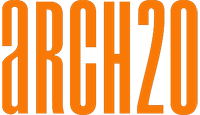Salon Architects Design Solid yet Dynamic Istanbul City Museum
Istanbul-based international architecture studio Salon Architects designs the new Istanbul City Museum in the city’s Topkapi district. The museum will be an attraction to citizens and visitors who would like to view the 8,000-year-old history of the city from various perspectives. It will be a reflection of the past, present, and future of Istanbul.
The Topkapi district is close to public transportation nodes, in addition to the intersecting axes of the Marmara Sea and Historical Peninsula. All these contextual elements contributed to the shape of the museum’s design. The museum has also no immediately adjacent attractions other than the Panorama Museum, making it an important future landmark and a transportation reference point for that neglected part of Istanbul.
The museum’s building has a monolithic design that gives an impression of a form carved from a solid mass. According to Salon Architects, it has “a low profile that communicates but also avoids any hierarchical competition with the historic walls nearby.” The museum’s closed form penetrated by a pedestrian bridge reflects Istanbul’s distinct topography separated by the sea. The building has massive slits which lead visitors into the museum to begin their journey through the urban history of Istanbul, which the designers resemble “wandering through the cracks of an archaeological finding.”
The museum’s solid and cubic form hides within its vicinity a dynamic spiral circulation that reflects the city’s character and history. The courtyard at its center plays a vital role to the circulation, acting as both an open-air exhibition area, a resting and meeting point, and a livening element for the museum. Along with the roof terraces and different openings, it will contribute to the visitor’s unique experience inside the museum.
The museum’s 38,000sqm will not be, only, for exhibition purposes, but it will also be raising the quality of the district’s urban life by providing facilities like a library, a children’s workshop, a showroom, activity areas, restaurants, and cafes, besides the temporary and permanent exhibition halls. All these facilities shall be located on the museum’s ground floor and will be naturally lit from the courtyard. Together with the exhibition halls, they will make this project a destination where visitors can spend their whole day.
The designers will be using a hybrid structure system for the building, where reinforced concrete will be used for the underground level and steel composite for the upper levels; a system which made it possible to enlarge the exhibition halls. As for the facades, they are covered in metal and glass reflecting the surrounding landscape and the changing weather at different times of the day. Additionally, the cantilevered masses maintain a transparent ground floor, while protecting visitors from the rain and the sun. Finally, on the inside, the designers will be utilizing natural and easy-maintenance materials, compatible with the exterior envelope, were used, like glass, metal, wood, and concrete.







